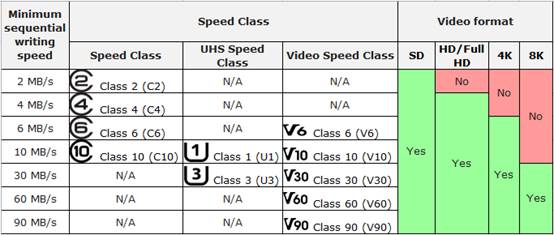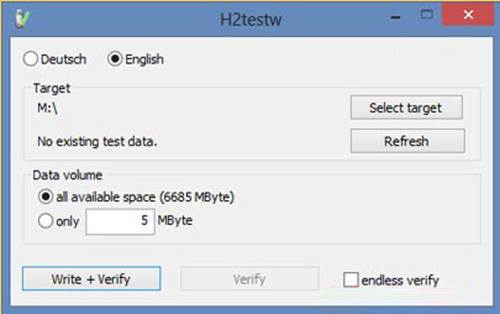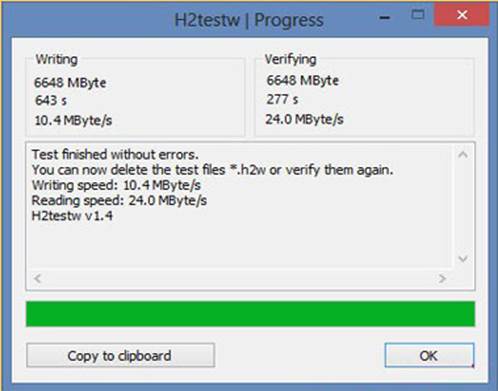How to Verify Fake Micro SD Cards
Tapo C200P2 , Tapo C201 , TC65 , Tapo C202 , TC74 , Tapo C100 , TC60 , Tapo C210 , Tapo C200 , TC70 , Tapo C310 , Tapo C101 , NC450( V1 V2 ) , EC70 , EC60 , KC115 , NC260( V1 V2 ) , KC105 , Tapo C21A
Recent updates may have expanded access to feature(s) discussed in this FAQ. Visit your product's support page, select the correct hardware version for your device, and check either the Datasheet or the firmware section for the latest improvements added to your product. Please note that product availability varies by region, and certain models may not be available in your region.
Note: The micro SD card is not included with the purchase of the camera. You need to purchase one yourself.
A security camera that works with a standalone micro SD card is primarily designed to store motion-activated recordings or short video clips of movements with local storage, which offers a cost-effective alternative to the subscription-based cloud storage. However, users may run into issues like the camera is unable to overwrite recordings, the SD card becomes full and stops recording or the SD card cannot be formatted by the camera App, etc. These kinds of problems might be caused by the fake SD card.
Micro SD Card and fake SD Card
An SD Card is a small electronic storage medium used by a plethora of storage devices including smartphones, games devices, camcorders, and cameras. Most of the smartphones and security cameras are using the micro SD card.
The TP-Link camera supports a micro SD card with up to 512GB capacity. If the remaining space of an SD card is less than 500MB or 5% of the total capacity before the first insertion of the camera, it would be impossible to record. There are different speed specifications for micro SD cards and it is recommended to use a card with Class 10 or UHS 1 speed rating, which requires a minimum writing speed of 10MB/s.
The most common fake SD card is the fake capacity expanded card, which uses illegal means and tools to make the cards with a small capacity appear larger. For example, a 32GB card is displayed as 128GB on your computer or other devices. This kind of card is usually has a lower price than the official quality goods. Since the capacity is Manual deceived by the illegal means and tools so that the space beyond the original capacity cannot be used normally. As long as the stored file exceeds the actual capacity, the file will be unavailable. Our camera recognizes the SD card and will format it in Fat32 format and creates index files to save your video data. This process reads and writes the entire space of the SD card and checks whether it is valid. If your SD card is an expanded card, it will not be formatted successfully and will not work properly on our camera. We do not support the card due to the particularity of the monitoring camera, we need to ensure that the SD card can work stably for a long time. And since camera data is relatively important, data loss or failure to write data can have a significant impact.
Note: For Tapo cameras, it is required to format the SD card on the APP for local recording.
Comparison of SD card Speed Class ratings

Types of Fake SD cards
When it comes to counterfeit memory cards, you will find some different types of them like listed below:
1. Reduced Read / Write Speed: You buy an SD card that shows something like “maximum 95 MB/s read and 90 MB/s write speed” and a “V30” label that is supposed to guarantee a minimum writing speed of 30 MB/s. But when copying a file using a fast SD card reader, you might not even get more than 5-10 MB/s.
2. Reduced Capacity: The SD card might report a large capacity when inserted in your computer, camera or storage device, while it contains only a very small part of the overall capacity. This happens because the microchip (a tiny part of the SD card that is responsible for reporting the total amount of storage available) within the card has been reprogrammed to report a different size to the host. Counterfeit SD cards with reduced capacities should be avoided the most because they will most certainly result in data loss.
3. Fake Brand: Some SD cards have big brand labels attached to them and sold at a premium price when in reality they are made from cheap parts by some unknown manufacturer. Such products are often more difficult to identify and might require a call to the manufacturer to verify the serial number. You can also read the reviews posted by verified buyers on Amazon or other online stores.
4. Unrealistic Capacity: There are memory cards that advertise completely unrealistic storage sizes. For example, if you search online for micro SD cards, you may find cards with capacities as large as 2TB, however, such capacities do not yet exist.
5. Bogus / Non-Working: Some SD cards are sold at incredibly low prices by unknown sellers and may just don’t work.
Fake SD Card Issues
As you can see from the earlier section, the issues can range from getting very slow speeds to data loss and unusable SD cards. The problem with fake SD cards with reduced capacity is that when users go over a certain capacity, all data from that point on will be corrupted. Everything appears to be working great at first, but troubles may show up in later usage.
How to Identify a Fake SD Card
If you have already purchased an SD card, there are a few things you can inspect and basic tests you can run to identify a fake SD card.
1. Inspect Product Packaging: Make sure the package contains necessary information about the product such as its specifications and card speed, as well as all the appropriate labels, warranty info, and a proper UPC. Users may also verify with SD card manufacturer directly.
2. Test the SD card with third-party software: For example, you could verify if you can write files to the advertised capacity for your SD card with software H2testw. Install the H2testw on your Windows computer (you can also run a similar tool called “F3” on Mac OS, and an app called SD Insight on Android device) and run the test, it will show you the real capacity of your SD card.


If the SD card you are using is fake, it will report errors and show how much actual data was written and read from the card.
Memory Card Buying Tips
Sum up the article with the below memory card buying tips:
· Always make sure to buy from an authorized seller.
· Be careful about cheap SD cards.
· Always inspect and test each card to make sure that it is genuine.
· Do not buy used or refurbished SD cards.
· Replace SD cards once every few years to reduce potential failure.
Is this faq useful?
Your feedback helps improve this site.
What’s your concern with this article?
- Dissatisfied with product
- Too Complicated
- Confusing Title
- Does not apply to me
- Too Vague
- Other
Thank you
We appreciate your feedback.
Click here to contact TP-Link technical support.
TP-Link Community
Still need help? Search for answers, ask questions, and get help from TP-Link experts and other users around the world.
This website uses cookies to improve website navigation, analyze online activities and have the best possible user experience on our website. You can object to the use of cookies at any time. You can find more information in our privacy policy . Don’t show again
This website uses cookies to improve website navigation, analyze online activities and have the best possible user experience on our website. You can object to the use of cookies at any time. You can find more information in our privacy policy . Don’t show again
Basic Cookies
These cookies are necessary for the website to function and cannot be deactivated in your systems.
TP-Link
accepted_local_switcher, tp_privacy_base, tp_privacy_marketing, tp_smb-select-product_scence, tp_smb-select-product_scenceSimple, tp_smb-select-product_userChoice, tp_smb-select-product_userChoiceSimple, tp_smb-select-product_userInfo, tp_smb-select-product_userInfoSimple, tp_top-banner, tp_popup-bottom, tp_popup-center, tp_popup-right-middle, tp_popup-right-bottom, tp_productCategoryType
Livechat
__livechat, __lc2_cid, __lc2_cst, __lc_cid, __lc_cst, CASID
Youtube
id, VISITOR_INFO1_LIVE, LOGIN_INFO, SIDCC, SAPISID, APISID, SSID, SID, YSC, __Secure-1PSID, __Secure-1PAPISID, __Secure-1PSIDCC, __Secure-3PSID, __Secure-3PAPISID, __Secure-3PSIDCC, 1P_JAR, AEC, NID, OTZ
Analysis and Marketing Cookies
Analysis cookies enable us to analyze your activities on our website in order to improve and adapt the functionality of our website.
The marketing cookies can be set through our website by our advertising partners in order to create a profile of your interests and to show you relevant advertisements on other websites.
Google Analytics & Google Tag Manager
_gid, _ga_<container-id>, _ga, _gat_gtag_<container-id>
Google Ads & DoubleClick
test_cookie, _gcl_au
Meta Pixel
_fbp
Crazy Egg
cebsp_, _ce.s, _ce.clock_data, _ce.clock_event, cebs
lidc, AnalyticsSyncHistory, UserMatchHistory, bcookie, li_sugr, ln_or


